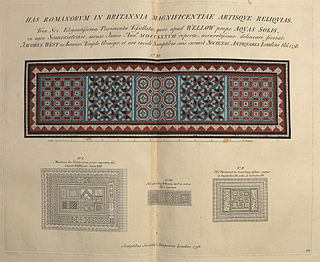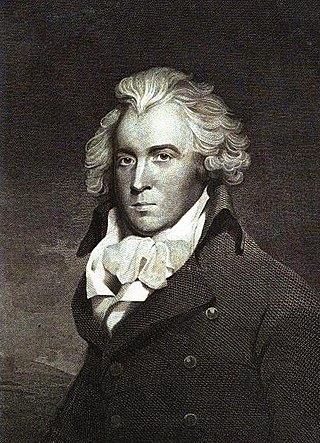External links
- Guide to the Royal Historical Society Camden series, which incorporates the Camden Society's publications, including lists of volumes published.
- Publications of the Camden Society at the Internet Archive
The Camden Society was a text publication society founded in London in 1838 to publish early historical and literary materials, both unpublished manuscripts and new editions of rare printed books. It was named after the 16th-century antiquary and historian William Camden. In 1897 it merged with the Royal Historical Society, which continues to publish texts in what are now known as the Camden Series.
The formation of the Camden Society in 1838 was the initiative of Thomas Wright, John Gough Nichols, and John Bruce. [1] It was modelled on the Surtees Society (founded in 1834 to publish materials relating to the history of northern England), of which Nichols had been the first treasurer. Other founder members included Thomas Amyot, [2] Thomas Crofton Croker, [3] Sir Frederic Madden, John Payne Collier, and Rev. Joseph Hunter. Lord Francis Egerton served as the first President. [4]
For an annual subscription (originally £1 per year), members received the Society's publications, roughly two volumes per year. The original membership was 500. In 1838, 20% of members were clergymen, 9% held legal qualifications, and 36% were Fellows of the Society of Antiquaries of London. [5] Membership reached a peak of 1250 in 1845, and began to decline thereafter. By the 1880s, the Camden Society was experiencing financial problems, brought about in part by a project to create a general index to its first 100 volumes. On 2 May 1897 it was amalgamated with (or effectively absorbed into) the Royal Historical Society. [6]
The Society published some works jointly with the Early English Text Society.
Between 1838 and 1872 the Society published 105 volumes in its first series (now sometimes known as the Old Series); followed by a further 56 volumes in its second series (known as the New Series), which appeared between 1871 and 1896. Following the merger with the Royal Historical Society, the joint society issued another 6 volumes in the New Series, of which the last, volume 62, appeared in 1901. A fresh series was then begun, published under the Royal Historical Society imprint, but named the Camden Third Series, in which 94 volumes appeared between 1900 and 1963. A further 44 volumes were published between 1969 and 1993 in the Camden Fourth Series; and the Camden Fifth Series, which began publication in 1993, had reached volume 67 by 2024, and remains in progress. The majority of volumes have contained book-length texts (occasionally running into multiple volumes), or thematic groups of shorter texts; but they have also from time to time – both in the two original Camden Society series and in the three RHS Camden Series – been made up of two or more disparate shorter texts, under the series title Camden Miscellany. A total of 36 Miscellany volumes had appeared by 2015.
Volumes are now published for the RHS by Cambridge University Press.

William Camden was an English antiquarian, historian, topographer, and herald, best known as author of Britannia, the first chorographical survey of the islands of Great Britain and Ireland that relates landscape, geography, antiquarianism, and history, and the Annales, the first detailed historical account of the reign of Elizabeth I of England.

An antiquarian or antiquary is an aficionado or student of antiquities or things of the past. More specifically, the term is used for those who study history with particular attention to ancient artefacts, archaeological and historic sites, or historic archives and manuscripts. The essence of antiquarianism is a focus on the empirical evidence of the past, and is perhaps best encapsulated in the motto adopted by the 18th-century antiquary Sir Richard Colt Hoare, "We speak from facts, not theory."

John Nichols was an English printer, author and antiquary. He is remembered as an influential editor of the Gentleman's Magazine for nearly 40 years; author of a monumental county history of Leicestershire; author of two compendia of biographical material relating to his literary contemporaries; and as one of the agents behind the first complete publication of Domesday Book in 1783.

The Society of Antiquaries of London (SAL) is a learned society of historians and archaeologists in the United Kingdom. It was founded in 1707, received its royal charter in 1751 and is a registered charity. It is based at Burlington House in Piccadilly, a building owned by the UK government.

Thomas Crofton Croker was an Irish antiquary, best known for his Fairy Legends and Traditions of the South of Ireland (1825–1828), and who also showed considerable interest in Irish song and music.

The Royal Historical Society (RHS), founded in 1868, is a learned society of the United Kingdom which advances scholarly studies of history.

A text publication society is a learned society which publishes scholarly editions of old works of historical or literary interest, or archival documents. In addition to full texts, a text publication society may publish translations, calendars and indexes.
The British Record Society is a British learned society that focuses on publishing historic records, or, more specifically, indexes to such records. In recent years, the Society has concentrated on the publication of name indexes to English probate records, and the texts of 17th-century Hearth Tax returns.
John Gage Rokewode was a historian and antiquarian.
Richard Caulfield (1823–1887) was secretary, librarian and custodian of the Royal Cork Institution and librarian for Queen's College, Cork.

John Gough Nichols (1806–1873) was an English painter and antiquary, the third generation in a family publishing business with strong connection to learned antiquarianism.
Thomas Madox was a legal antiquary and historian, known for his publication and discussion of medieval records and charters; and in particular for his History of the Exchequer, tracing the administration and records of that branch of the state from the Norman Conquest to the time of Edward II. It became a standard work for the study of English medieval history. He held the office of historiographer royal from 1708 until his death.
Thomas Amyot was an English antiquarian.

Vetusta Monumenta is the title of a published series of illustrated antiquarian papers on ancient buildings, sites and artefacts, mostly those of Britain, published at irregular intervals between 1718 and 1906 by the Society of Antiquaries of London. The folio-sized papers, usually written by members of the society, were first published individually, and then later in collected volumes.
The Spalding Club was the name of three successive antiquarian and text publication societies founded in Aberdeen, which published scholarly editions of texts and archaeological studies relevant to the history of Aberdeenshire and its region. The clubs were named after the 17th-century historian John Spalding.
Charles John Smith (1803–1838) was an English engraver.
Thomas Blore (1754–1818) was an English topographer.
John Bruce (1802–1869) was an English antiquary, closely associated with the Camden Society.

James Cavanah Murphy (1760–1814) was an Irish architect and antiquary.
The lists of English translations from medieval sources provide overviews of notable medieval documents—historical, scientific, ecclesiastical and literary—that have been translated into English. This includes the original author, translator(s) and the translated document. Translations are from Old and Middle English, Old French, Irish, Scots, Old Dutch, Old Norse or Icelandic, Italian, Latin, Arabic, Greek, Persian, Syriac, Ethiopic, Coptic, Armenian, Hebrew and German, and most works cited are generally available in the University of Michigan's HathiTrust digital library and OCLC's WorldCat. Anonymous works are presented by topic.